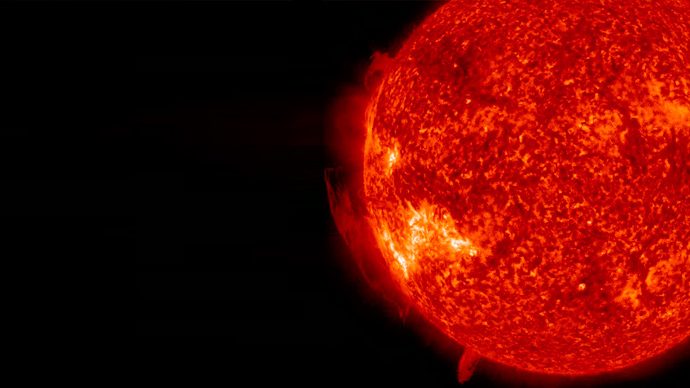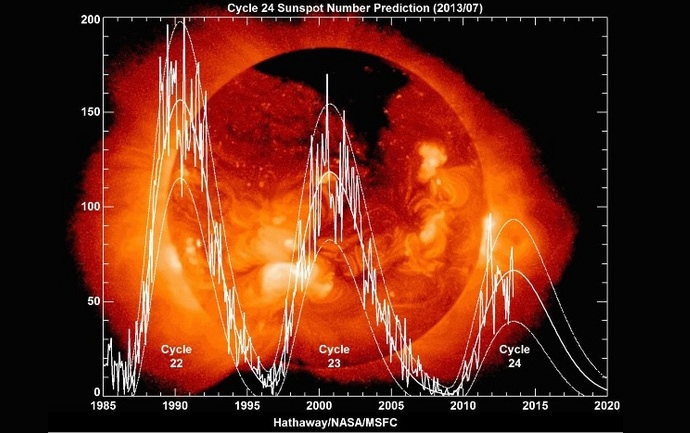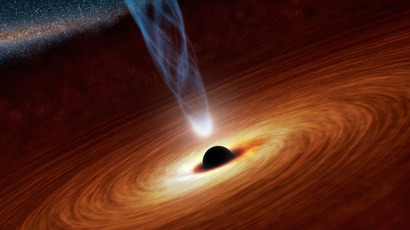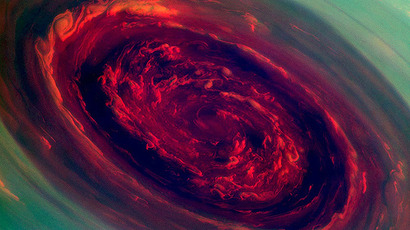Sun dial-down: Looming weak solar max may herald frosty times

The current solar activity cycle, possibly the weakest in 100 years, is approaching its maximum. This may signal a future low period for the sun, probably not unlike the one that caused the so-called Little Ice Age from the mid-16th to mid-19th centuries.
Solar activity can be easily monitored by the number of sun spots. Regular recordings of the phenomenon have been available since the middle of the 18th century, with the star’s activity reaching peaks about every 11 years. The current Solar Cycle 24, is about to pass its prime in a matter of months, according to observations.
One indicator of the upcoming change is the reduction of solar magnetic activity. Every cycle peak the sun’s magnetic field flips polarity due to reorganization of its inner dynamo.
"The sun's north pole has already changed sign, while the south pole is racing to catch up," says Phil Scherrer, solar physicist at Stanford's Wilcox Solar Observatory, which has been monitoring the sun's polar magnetic fields since 1976.
"Soon, however, both poles will be reversed, and the second half of Solar Max will be underway," he added as cited by NASA Science.

Solar Cycle 24 is unusual on several accounts. It came late about a year, with extremely low activity recorded throughout 2009, which made astronomers shift a predicted 2012 peak to 2013. Also a few years ago the northern hemisphere of the sun became significantly more active than the southern, with the latter trying to catch up.
Further muddying the water is the fact that the previous four
cycles had double peaks rather than single ones. The sun was
quite active in 2011, but then went into a lull, with
fewer-than-expected sunspots and solar flares in 2012 and 2013.
The current cycle is likely to have an in-between peak too, some NASA scientists say, with a second spike expected in late 2013 to early 2014. The increased activity would be due to the lagging southern hemisphere as the main driver.
Possible explanations for the sun’s latest odd behavior were discussed last month at a meeting of the Astronomical Society’s Solar Physics Division. Scientists agree that Cycle 24 is already among the weakest reported.
“Not only is this the smallest cycle we’ve seen in the space age, it’s the smallest cycle in 100 years,” NASA/Marshall Space Flight Center research scientist David Hathaway said.
Some more radical explanations sound quite alarming. Matthew Penn of the National Solar Observatory says the strength of magnetic field in sunspots in waning, and the sunspot cycle may disappear altogether.
“If this trend continues, there will be almost no spots in Cycle 25, and we might be going into another Maunder Minimum,” he said.
Maunder Minimum is a period between about 1645 and 1715, in which sunspots became extremely rare. In fact some 18th century astronomers believed sunspots to be a myth. The period coincides with the so-called Little Ice Age, a time when the climate became cold enough for the River Thames in London to freeze in winter. On the gloomier side, the colder summers and harsh winters sealed the fate of the Viking colonies in Greenland, as its population starved and died out.
While there is no certainty that the Little Ice Age was caused primarily by the decreased solar activity, a link does exist. If the next solar cycles are even quieter that the current one, and a cooling takes place, it may counteract the global warming trend over the next few decades.














